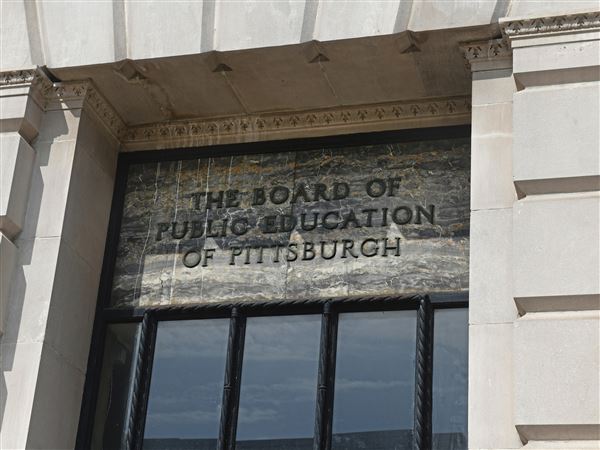Since its debut in November, Gazette 2.0 has produced stories on topics such as Stowe Township holding the line on a tax hike and St. Philip’s school students placing second in a gingerbread house competition.
But readers wanted more from the free biweekly publication covering McKees Rocks and 10 suburbs west of Pittsburgh. “We didn’t initially include police reports … and received several complaints for not including them,” said Rich Dieter, who was managing editor for the first several editions.
The editors began running a police blotter, including traffic stops, robberies and domestic disturbances, along with local features and multiple pages of high school sports coverage.
With its emphasis on hyper-local news, Gazette 2.0 joins a handful of upstart ventures — some print, some digital, some both — trying to fill a void that has been created as long-established daily and weekly papers in the region reduce staff, consolidate, move to web-only or cease publishing altogether.
Whether these new publications can become financially sustainable isn’t yet clear. At stake may be the industry’s role as watchdog over local police, neighborhood squabbles and very local level events. “The big issue is, is anyone out there covering the school board, the town council, and getting into the nitty gritty of tax increases and infrastructure issues?” said R. Thomas Berner, professor emeritus of journalism at Penn State University.
For more than a decade, newspapers have been smacked hard by declines in advertising and circulation revenues while grappling with readers’ transition to digital news sites. In the past decade, Pennsylvania lost eight daily papers, according to the Pennsylvania NewsMedia Association in Harrisburg, reducing the total operating to 76 compared with 84 in 2007.
Non-dailies fared worse, PNA statistics show, with 149 now publishing, compared with 207 in 2007.
“Revenue is a problem for all of us,” said Mark Cohen, president of the news association. “It’s no different for weeklies, small newspapers or large newspapers.”
According to a June study by the Washington, D.C.-based Pew Research Center, newspaper advertising revenue — on a steady decline for more than a decade — dropped by 10 percent in 2016 to $18 billion.
Circulation — including print and digital — at papers nationwide in 2016 was 34.7 million on weekdays and 37.8 million on Sundays, down from highs of about 62 million for both daily and Sunday papers from the late 1960s to the 1990s.
Much of the fallout from those shifts has come in the form of staff reductions — and the disappearance of reporters from many school board meetings, court hearings and other gatherings that impact communities.
Employment at newspaper publishers fell by more than half between 2001 and late 2016, according to the U.S. Bureau of Labor Statistics. There were 412,000 employees in January 2001 compared with 174,000 in September 2016, the BLS said.
Western Pennsylvania wasn’t spared the cuts.
In 2015, Trib Total Media unloaded many of its weekly and community newspapers and closed dailies in Monessen and McKeesport. In late 2016, the company stopped publishing a print edition of its Pittsburgh Tribune-Review and eliminated 20 percent of its workforce through buyouts and layoffs.
The Observer-Reporter, based in Washington County, also offered buyouts and trimmed about 19 percent of its payroll in 2016.
In recent years, the Pittsburgh Post-Gazette has reduced headcount through rounds of employee buyouts and consolidated suburban zones into one weekly section filled with community news and high school sports. It’s also launched the NewsSlide app to reach readers in a new way.
Last summer, cutbacks hit the Uniontown Herald-Standard and the Beaver County Times after owner Calkins Media exited the publishing business. Family-controlled Calkins, which founded its newspaper chain in 1937 in Uniontown, sold the Beaver County Times, Ellwood City Ledger, two Eastern Pennsylvania papers and one in New Jersey to GateHouse Media for $17.5 million.
GateHouse, which owns 130 daily and more than 600 community publications in small- to mid-size markets across the U.S., quickly offered buyouts at its new properties, laid off some employees, and consolidated page design functions at its corporate center in Austin, Texas. A handful of employees left the Beaver County Times after the restructuring.
In Uniontown, the local paper was acquired by Ogden Newspapers, the Wheeling, W.Va.-based media company owned by the Nutting family, which also controls the Pittsburgh Pirates and the Seven Springs and Hidden Valley resorts. Calkins also sold the weekly Greene County Messenger to Ogden. Ogden expects to soon purchase the bankrupt Charleston Gazette-Mail in Charleston, W.Va.
When Robert Nutting, Ogden’s chief executive and chairman of the Pirates, visited the Uniontown Herald-Standard to announce the deal, the paper quoted him as saying, “We love southwestern Pennsylvania, the people, the sense of community and the multigenerational commitment that so many families have to the region.
“As it is critical to the Pirates, newspapers do the same for a community, binding generations together,” Mr. Nutting said.
A few weeks later, close to half of the Herald-Standard’s 70 employees were let go. Half of those who lost their jobs worked in the newsroom as reporters, photographers and editors.
Former employees at the Herald-Standard — like those at other publications hit hard by the pullbacks — now wonder how remaining reporters can adequately cover the public agencies, crime, political goings-on and other news in the seat of Fayette County government.
“It’s like a green light for politicians,” said Mark O’Keefe, former editorial page editor of the Herald-Standard. “You need reporters asking questions.”
Mr. Cohen at the Pennsylvania NewsMedia Association acknowledged many news publications have been forced to ask tough questions about what to cover and what to give up on. “Being a watchdog is the cornerstone of what we do and should not be compromised,” he said.
Digital-only sites including Patch.com, NEXTpittsburgh, The Incline and PublicSource fill some of the gap in local reporting but have a mix of missions, ranging from quick-hit news updates to features, arts, entertainment and longer-form investigative pieces. None has reporters who regularly staff municipal happenings in the towns and boroughs outside of the city of Pittsburgh.
To fill the void left after the closing of Monessen’s Valley Independent, a group of private investors in that Westmoreland County town pooled resources to launch the Mon Valley Independent. Published six days a week in print and online, the publication specializes in local news and high school sports in Monessen and surrounding communities.
Jeff Oliver, who retired Feb. 1 as general manager of the Mon Valley Independent and was a longtime employee of the Valley Independent, declined to disclose figures but said circulation has risen steadily at the young newspaper. It expects to open a satellite office in the former Daily News building in McKeesport.
That vacant structure was donated by Trib Total Media to McKeesport’s Redevelopment Authority, which plans to turn it into a media accelerator that could also house a local radio station and small, multimedia firms.
In Pittsburgh’s East End, Print, a weekly available exclusively in print, has followed community happenings in a handful of neighborhoods since its launch in 2016.
An early December edition featured Point Breeze Light-Up Night; a live Nativity scene at Eastminster Presbyterian Church in East Liberty; and a forum on health and climate issues at the Jewish Community Center in Squirrel Hill. Weekly staples include the police blotter and neighborhood school lunch menus.
Publisher Ann Belser, a former Post-Gazette reporter, said revenue challenges have forced her to eliminate most freelancers but she remains committed to keeping the paper going.
Response to having a news outlet again in McKees Rocks following the September closure of the weekly Suburban Gazette — which had operated for over 100 years — has been so strong that Gazette 2.0 plans to launch paid, home delivery subscriptions.
The publication currently is distributed for free at local shops, gas stations and convenience stores, and its digital edition is also free.
Whether scrappy hyperlocal startups can sustain themselves on limited circulation and advertising remains to be seen — as does their ability to hold local officials accountable.
Mr. Berner, the Penn State professor emeritus who wrote his master’s thesis on the death of his hometown paper in Tamaqua, Schuylkill County, recalled a Tamaqua council official telling him, “This means when we change the garbage collection schedule, it’s no longer going to be on Page 1, if it’s in the paper at all.”
“And that’s what it comes down to,” said Mr. Berner. “These little tidbits that are important to individuals are no longer covered.”
Joyce Gannon: jgannon@post-gazette.com or 412-263-1580.
First Published: February 25, 2018, 1:00 p.m.
















